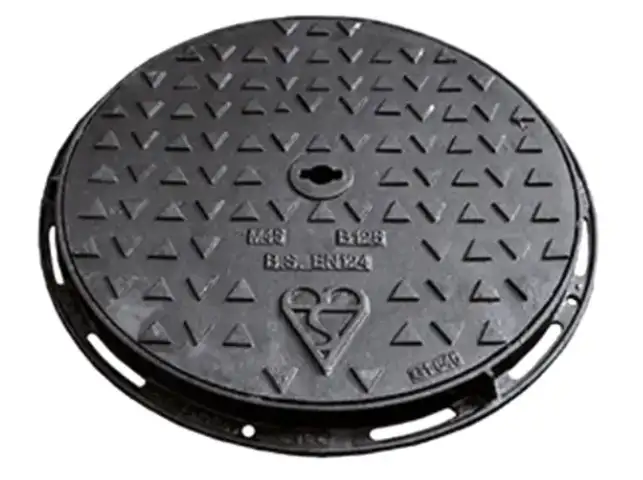Manhole covers are essential components in urban infrastructure, providing access to underground utilities such as sewage systems, storm drains, and electrical networks. The price of manhole covers varies significantly based on several factors, including material, size, load capacity, and manufacturing standards. Understanding these variables is crucial for making cost-effective and appropriate choices for specific applications.

Factors Influencing Manhole Cover Prices
1. Material Composition
The material used in manufacturing manhole covers plays a pivotal role in determining their cost. Below is a comparison of common materials:
| Material | Characteristics | Typical Price Range (USD) |
|---|---|---|
| Cast Iron | Durable, corrosion-resistant, heavy-duty | $100 – $300 |
| Ductile Iron | High strength, impact-resistant, flexible | $120 – $350 |
| Steel | Lightweight, cost-effective, suitable for light loads | $80 – $250 |
| Concrete | Economical, suitable for non-traffic areas | $50 – $150 |
| Composite (FRP) | Lightweight, corrosion-resistant, non-conductive | $150 – $400 |
| Plastic (Polymer) | Lightweight, resistant to corrosion, non-conductive | $60 – $180 |
Note: Prices are indicative and may vary based on supplier, region, and specific product specifications.
2. Size and Load Capacity
Larger manhole covers with higher load capacities are generally more expensive due to the increased material requirements and manufacturing complexity. For instance, covers designed to withstand heavy vehicular traffic (e.g., AASHTO H20 or H25 standards) are priced higher than those intended for pedestrian areas.
3. Manufacturing Standards and Certifications
Manhole covers that comply with international standards (e.g., EN124, AASHTO) or possess certifications (e.g., ISO 9001) often come at a premium. These certifications ensure the product’s quality, safety, and reliability, which are critical in infrastructure applications.
4. Design and Customization
Custom-designed manhole covers with specific logos, patterns, or colors can increase the cost. While standard designs are more economical, customized options offer aesthetic appeal and can serve branding purposes.
5. Quantity and Bulk Purchasing
Purchasing manhole covers in bulk can lead to significant cost savings. Suppliers often offer discounts for large orders, making it a cost-effective option for large-scale projects.
Comparative Analysis of Manhole Cover Materials
To provide a clearer understanding, here’s a detailed comparison of various manhole cover materials:
| Material | Advantages | Disadvantages | Typical Applications |
|---|---|---|---|
| Cast Iron | High durability, proven performance, recyclable | Heavy, prone to theft, susceptible to corrosion | Roads, highways, industrial areas |
| Ductile Iron | Enhanced strength, impact-resistant, flexible | Higher cost than cast iron | Heavy-duty applications |
| Steel | Lightweight, cost-effective, easy to handle | Lower corrosion resistance, may deform under load | Light traffic areas, maintenance |
| Concrete | Economical, readily available | Heavy, prone to cracking, limited load capacity | Non-traffic areas, utility access |
| Composite (FRP) | Lightweight, corrosion-resistant, non-conductive | Higher initial cost, limited load capacity | Coastal areas, electrical vaults |
| Plastic (Polymer) | Lightweight, resistant to corrosion, non-conductive | Lower load capacity, may degrade under UV exposure | Residential areas, landscaping |
Commonly Asked Questions (FAQs)
1. What factors should I consider when choosing a manhole cover?
When selecting a manhole cover, consider the following:
-
Load Requirements: Determine the expected load the cover will bear (e.g., pedestrian, vehicular, heavy machinery).
-
Material: Choose a material that aligns with environmental conditions and load requirements.
-
Size and Shape: Ensure the cover fits the designated opening and meets spatial constraints.
-
Compliance: Verify that the cover complies with local standards and regulations.
-
Budget: Balance quality and cost to find a solution that meets both performance and financial criteria.
2. How do manhole cover prices vary by region?
Manhole cover prices can vary significantly by region due to factors such as local manufacturing costs, transportation expenses, and regional demand. For example, urban areas with high traffic volumes may see higher prices for heavy-duty covers, while rural areas might have more economical options.
3. Are there eco-friendly manhole cover options?
Yes, eco-friendly manhole covers are available, typically made from recycled materials or designed to be recyclable. Composite materials like FRP (Fiber Reinforced Polymer) are often used for their durability and low environmental impact.
4. What is the lifespan of a manhole cover?
The lifespan of a manhole cover depends on the material and environmental conditions. Cast iron covers can last several decades, while composite materials may offer similar longevity with added resistance to corrosion.
5. Can I install a manhole cover myself?
Installation of a manhole cover requires proper handling and alignment to ensure safety and functionality. While some covers are designed for easy installation, it’s recommended to consult with professionals, especially for heavy-duty applications.
6. How do I maintain a manhole cover?
Regular maintenance includes inspecting for signs of wear, corrosion, or damage. Ensure that the cover fits securely and that the surrounding area is clear of debris. For covers in high-traffic areas, periodic checks are essential to maintain safety and functionality.
Conclusion
Selecting the appropriate manhole cover involves understanding the specific requirements of your project, including load capacity, material properties, and environmental conditions. By considering these factors and comparing different options, you can make an informed decision that balances performance, safety, and cost-effectiveness.
